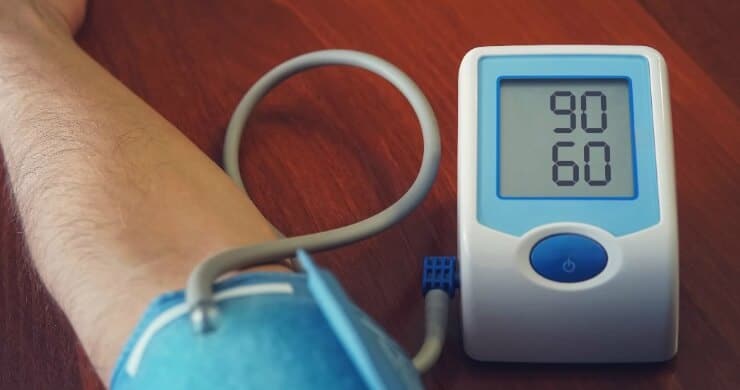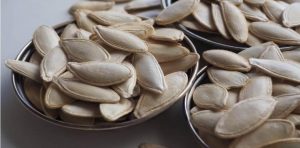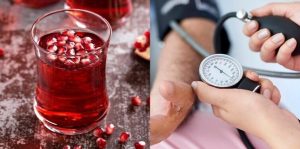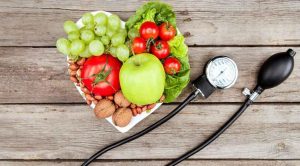Compared to high blood pressure, low blood pressure (hypotension) affects fewer people around the world. Even though low blood pressure may appear less dangerous than high blood pressure, in some severe cases, for instance when the pressure is abnormally low, it can be life-threatening, according to Mayo Clinic.
If we need to define low blood pressure in a way that people from all walks of life can understand; low blood pressure is the condition that occurs when blood pressure readings are lower than 90( mmHg) the upper number or 60 (mmHG) the lower number.
What we should know is that if a person doesn’t show any symptoms although his/her blood pressure readings are low, there is no need for treatment.
What’s more, people who don’t experience any symptoms despite low blood pressure levels are considered healthy individuals. Because, those who exercise regularly tend to have lower blood pressure relative to those who don’t, according to experts.
Nevertheless, low blood pressure becomes a source of concern when it causes symptoms. According to the American Heart Association, the followings are among the concerning signs and symptoms of low blood pressure :
• Dizziness or lightheadedness
∗ Nausea
• Fainting
∗ Dehydration and unusual thirst
• Lack of concentration
∗ Blurred vision
• Cold, clammy, pale skin
∗ Rapid, shallow breathing
• Fatigue
∗ Depression
Most people can increase their low blood pressure levels and eliminate the related symptoms ( if there are any) with certain methods.
If your aim is to increase your low blood pressure you can do it with some modifications in your life.
Now it is time to explore the 8 natural ways to increase low blood pressure with lifestyle changes.
1- Increase Water Consumption
Independent of blood pressure, drinking plenty of water every day is necessary for your health unless you have a health condition that restricts doing so.
As for the relationship between water and low blood pressure; dehydration can sometimes cause blood pressure to drop, according to the American Heart Association.
Therefore, especially those who are more susceptible to low blood pressure should avoid dehydration by drinking the recommended amount of water during the day.
2- Salt May Raise Your BP
Even though salt is discredited for being harmful to the human body, in this case, it might be the total opposite.
Slightly increasing your daily sodium intake might be what you need in order to raise low blood pressure.
Nonetheless, as mentioned above, increasing sodium intake may trigger other symptoms in the body. Therefore, talk to your doctor about your intention of increasing your sodium intake and determine together the ideal amount for your body.
3- Learn The Side Effects
Some drugs may have side effects that lower blood pressure. Therefore, you should know if the medicine that you may be using causes a drop in your blood pressure.
If you suspect that the medicine you are using lowers your blood pressure, visit your doctor to discuss the issue.
The best way to avoid the occurrence of this circumstance is to talk to your doctor before start using a medicine.
4- Eat Small Meals Frequently
How much and how frequently you eat may also carry importance when it comes to blood pressure. According to experts, it is possible that individuals experience drops in their blood pressure level after a large meal.
However, this can happen more likely to an older person. According to Harvard Health Publishing, this condition affects one in third of older men and women.
To prevent large meals from causing a drop in blood pressure, doctors recommend frequent meals with smaller portions throughout the day. For instance, six smaller meals every day.
5- Limit Alcohol Consumption
As mentioned above, dehydration is one of the causes of low blood pressure. Therefore, avoiding dehydration can minimise the risk of having low blood pressure.
People with low blood pressure should limit their alcohol consumption to avoid a further drop in their blood pressure because excessive alcohol consumption can cause dehydration in the body.
6- Stand up or Sit Slowly
Nearly all adults have experienced the symptoms such as lightheadedness, and dizziness at least a couple of times when standing up too quickly from a lying or sitting position. But, if you are a person with low blood pressure, these sudden movements can even result in fainting.
The main reason for the occurrence of these symptoms is explained by the amount of blood flow to the brain being reduced due to sudden movement.
Therefore, try not to stand up or sit too quickly to avoid the symptoms in question.
7- Prefer Compression Stockings
Wearing compression stockings can be an effective way to prevent your blood pressure from lowering. Compression stockings exert pressure on the lower legs thus increasing the blood circulating from legs back to the heart and lungs.
Compression stockings are also known to be used in the treatment of varicose veins.
8- Caffeine
This one is a temporary solution to increase blood pressure. According to Mayo Clinic, caffeine increases blood pressure for a short period of time, but no one knows how. It is thought by scientists that caffeine narrows the arteries hence increasing blood pressure for a while.
Tarkan is an experienced health writer ( currently more than 600 articles ) and also the founder of this website namely www.neededforhealth.com. His expertise in health stems from in-depth medical research and knowledge which he obtained over the course of many years.
Tarkan enjoys sharing factual knowledge on health, psychology and nutrition. He always aims to deliver evidence-based recommendations, provide links to related scientific studies.





